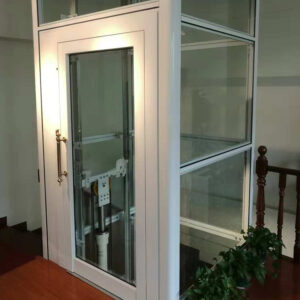Daftar isi
BeralihComponents of Lifts
In today’s fast-paced world, the components of lifts play a crucial role in ensuring safe and efficient vertical transportation. Lifts, or elevators, are essential in various settings, including residential buildings, commercial spaces, and industrial sites. Understanding the key components of lifts can illuminate how they function and their importance in our daily lives.
At the core of any lift is the elevator cab, the compartment that carries passengers and goods. An example of its importance can be seen in high-rise buildings where multiple floors need quick and convenient access. A well-designed cab not only provides enough space but is also equipped with safety features like emergency buttons and appropriate lighting. Imagine a family moving into a tenth-floor apartment; the lift cab ensures that not only are their bags transported swiftly, but they can also feel secure during their journey.
Another vital aspect of the components of lifts is the drive system. Most modern elevators utilize either hydraulic or traction systems. For instance, traction lifts use ropes and pulleys driven by an electric motor. This system results in energy-efficient operations, especially in tall buildings. An office tower with many floors benefits immensely from a traction lift as it allows for faster travel between levels, crucial during peak business hours.
Moreover, the safety mechanisms embedded in lift designs cannot be overlooked. These include safety brakes, overspeed governors, and door sensors. Without them, the risk of accidents would significantly increase. A poignant example could be observed in older models of lifts that lacked modern safety features. Problems like sudden power outages could lead to serious hazards. However, with contemporary safety components, even in the event of a power failure, passengers can safely reach the nearest floor.
Also, the control system plays a pivotal role in the operation of lifts, impacting their efficiency. These systems manage how lifts respond to calls and the most efficient route they should take. Advanced models employ algorithms similar to those used in navigation apps, optimizing waiting times for passengers. Take a shopping mall, for instance, where several customers may request lifts simultaneously. An efficient control system ensures that no one is left waiting too long, enhancing the overall shopping experience.
Lift maintenance components are equally significant. Regular inspection and upkeep of critical parts like hydraulic fluids, cables, and electronic systems ensure reliability. Neglecting these components can lead to malfunctioning lifts, which can result in frustration or even injury. Businesses like hotels, which rely heavily on their lifts to transport guests and their luggage, prioritize regular maintenance to operate seamlessly.
The extensive applications of the components of lifts span various fields. In healthcare, for example, lifts are equipped to handle stretchers and medical equipment, ensuring swift transportation of patients. In industrial settings, lifts facilitate the movement of heavy machinery and materials, enhancing productivity. These features, tailored to specific environments, emphasize the adaptability of lift components across different industries.
In conclusion, understanding the key components of lifts reveals their critical role in ensuring safe and efficient vertical transportation. From the elevator cab to the drive system, safety mechanisms to control systems, each part contributes to a seamless experience. By appreciating the intricate workings behind these components, we can better understand how vital lifts are in our everyday life. The careful integration of these elements not only supports efficiency but also enhances safety, reflecting their undeniable value in today’s vertical transportation landscape. Whether in residential buildings, offices, or hospitals, the components of lifts will continue to evolve, maintaining their essential role in the movement of people and goods.


